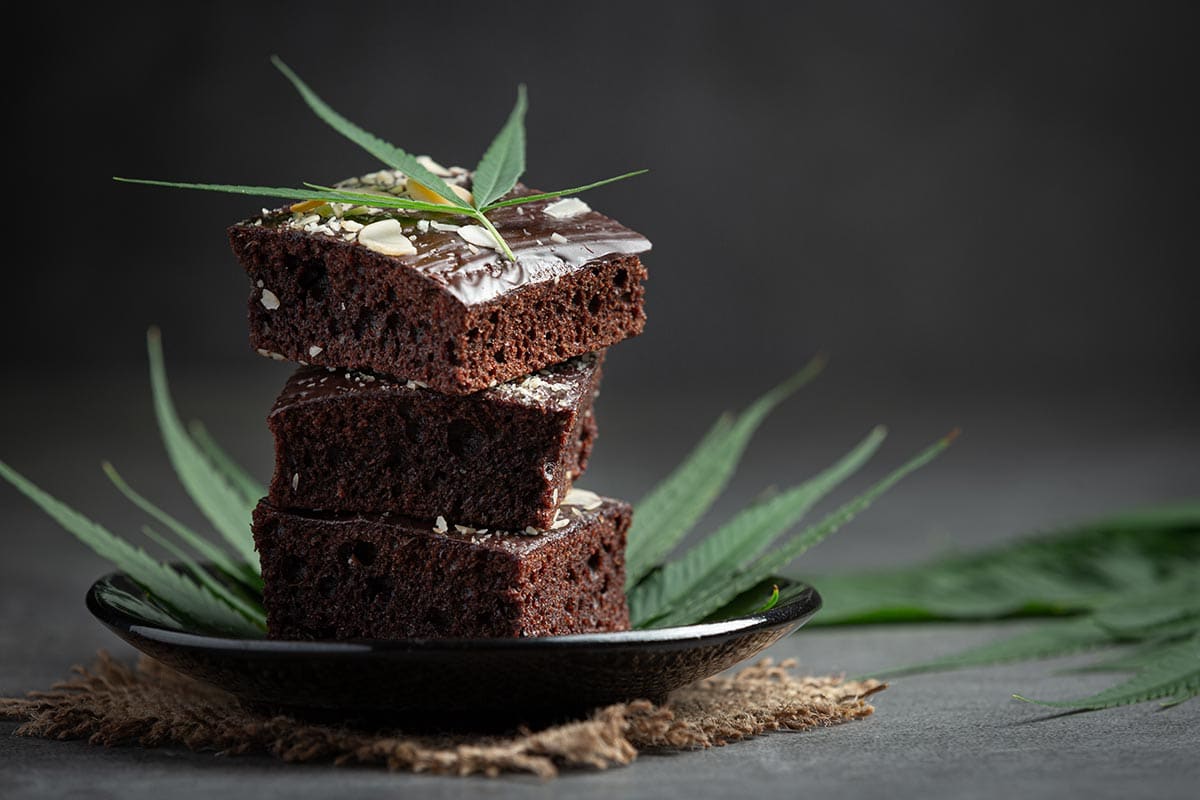You’ve probably heard a lot about marijuana or cannabis lately. Maybe you’ve seen documentaries like “Cooking on High” or “Bong Appetit” and are curious to learn more. Or maybe you know someone who uses CBD oil or other forms of cannabis and have been wondering what the hype is all about. In this beginner’s guide to cooking with cannabis, we’ll explore some of the basics of using this plant for culinary purposes.
We’ll cover everything from the types of cannabis available to how to prepare it for use in food. So whether you’re a complete novice or just want to learn more about this interesting trend, read on for some tips and advice!
What is cannabis and how is it used for cooking?
Cannabis Sativa is a plant that produces flowers containing potent compounds called cannabinoids. The most well-known of these is THC, which causes the “high” associated with marijuana use and can be found in varying levels depending on the strain.
As well as THC, cannabis also contains cannabidiol, commonly known as CBD, and other cannabinoids such as CBN and CBG which are now also being recognised for their individual therapeutic values.
The benefits of cooking with CBD and cannabis
Edibles are a great way to get the most out of your medicine and they are very versatile:
- CBD and cannabis can help reduce stress levels.
- It can increase your appetite if you are struggling to eat.
- Cannabis oil has been shown to be effective in treating seizures, cancer, and chronic pain.
- Adding cannabinoids to food allows intake through ingestion as opposed to smoking or vaping which could potentially be harmful to the lungs.
Choosing the right strain
When it comes to cooking with cannabis, one of the most important things to consider is the strain you are using. Not all strains are created equal, and some are better suited for cooking than others.
When choosing a strain for cooking, you’ll want to consider its potency and flavour. Some are more potent than others, and will produce a stronger flavour in your dish. You’ll also want to choose a strain that you enjoy the taste of, as you’ll taste it.
If you’re new to cooking with cannabis, I recommend starting with a mild strain like Northern Lights, which is known for its mellow effects and earthy flavour. Or you could try a high CBD strain like Charlotte’s Web. Once you’re comfortable, try experimenting with different strains to find one that suits your tastes.
What is decarboxylation and why does my cannabis need it?
When cooking with cannabis, one of the most common mistakes that is made is forgetting to decarboxylate your flower.
Decarboxylation is the process by which cannabis plants’ psychoactive chemicals are activated so that you feel high, or relaxed, when you consume them.
The cannabis plant contains THCA and CBDA, which will not get you high or make you relaxed. To get the effects, these need to be converted into THC and CBD. This is most commonly done with heat—a lighter’s flame, a vape pen’s atomizer, or an oven when making edibles.
The chemical structures of THCA and CBDA contained in the plant have an extra carboxyl ring. Heat removes that ring, or de-carboxylates the compound.
Cooking with cannabis involves 3 stages:
- The decarboxylation process
- Infusion of cannabutter
- Straining and storing
STAGE 1: HOW TO DECARBOXYLATE CANNABIS

Activation of cannabinoids begins at 90 °C, held for 30- 60 minutes but some chefs prefer slightly higher temperatures. Each strain has its own unique optimal temperature range so check that before you start.
To decarboxylate your flower, set the heat to 90 °C (200-245ºF)and line a tray with parchment paper. Cut up your flower into pea-sized pieces; then bake for 30 minutes, checking it every few minutes. Do not exceed 115° C when doing this process as it will cause degradation in the weed’s potency.
Use every part of your cannabis flowers when decarboxylating, including stems and buds. Don’t waste it! Make sure it’s all the same strain if you want to be accurate with how much THC or CBD it contains.
Stove temperatures can vary, so keep an eye on your cannabis. If it turns brown too quickly or smells like it’s burning, turn down the temperature
You will need
- A cooker
- a baking tray
- cannabis
- Parchment paper or aluminium foil
Directions
- Set the temperature to 90°C with the rack on the middle shelf. The centre of the oven is ideal since ovens are hotter near the top and cooler towards the bottom.
- Line the tray with the paper or aluminium foil, and break the cannabis onto it in pea size lumps. If it is too fine, it may burn.
- Heat for 30-40 minutes, turning the cannabis at least once and preferably several times.
- Allow it to cool for 30 minutes at room temperature. The cannabis should look golden brown and lightly toasted.
- When cool enough to handle, add your decarboxylated cannabis to butter, oil, or honey for the infusion, or store it for future use.
STAGE 2: MAKING THE INFUSION
When it comes to making marijuana edibles, the key is finding a fat-soluble ingredient. THC and CBD need fats in order for your body’s cells to use them properly and your infused food will be more effective once those ingredients dissolve into recipes like chocolate chip cookies.
How to make cannabutter
Now that you have decarbed your weed, you’re ready to start infusing.
1. Melt one part butter to 3 parts water together. The water will help the fat heat more evenly. So, for every 250g of butter, add 750 ml of water. To this add between 3.5g – 7g of weed (Depending on how strong you would like it), or more if you are using leaves and stems instead.
2. Set your burner to the lowest heat setting. The fat needs to cook at 65º celsius (150º Fahrenheit) and should go no higher than 93º C (200ºF) as a high temperature will burn the mixture. A cooking thermometer can help you gauge the exact temperature.
3. Add the decarbed cannabis and combine. Cover the pot with a lid for better heat distribution during the extraction process.
4. Simmer for three to four hours at 65°C. The longer it steeps, the stronger it will be, but keep the temperature low. If you choose a longer cooking time, increase the amount of water used since it will evaporate and the butter might burn.
STAGE 3: STRAINING AND STORING
Now your home is filled with the delicious smell of cannabis and butter, it’s time to strain your mixture.
1. Place several layers of cheesecloth over a jar to create a filter. Use an elastic band to keep it in place. Coffee filters also work well. Most food strainers are too coarse for this purpose.
2. Slowly pour the mix through the cheesecloth. Allow it to drain completely so it doesn’t overflow. Once it’s completely strained, you can either dispose of or compost the spent marijuana.
3. Allow it to cool for 30 minutes at room temperature, then transfer it to the fridge.
4. Remove any excess water. Once it’s cool and solidified, you’ll be able to see the butter on top and a thin layer of water near the bottom of the jar. Remove as much water as possible from the jar.
The oil should have a shelf life of at least two months and can be frozen for longer storage.
Your cannabutter is now ready to use
You may want to cut it into small, uniform pieces for easy dosing. You can use Cannabutter in place of butter or oil in virtually any recipe.
Because it is so strong, it is best to add only a tiny amount of cannabutter at a time until you know your tolerance. You can always add more cannabutter or eat more edibles, but you can’t un-eat them and the effects last much longer than smoking or vaping, so go slow!
Cannabis oil / cannaoil
You can use any oil to infuse, depending on the recipes you’d like to make. Each oil will add its own particular flavour to the mix. Try:
- Olive oil
- Coconut oil
- Avocado oil
- Peanut oil
- Sunflower oil
- Chilli oil
Just follow the process above, keeping a close eye that the oil does not overheat.
Remember that heating oil can be dangerous so keep a wet towel nearby in case of accidents.
Cannahoney
There are many different ways to enjoy cannabis honey, but be careful! This sticky stuff will get all over your clothes and hands if you don’t watch out. It’s also good for drizzling on top of some snacks or drinking as a hot tea on its own
To make cannahoney follow the instructions for cannabutter above, substituting honey for the butter. Remember to always decarboxylate first.
Once cooled, the honey will keep for 1-2 months if stored in a cool place.
Cannabis tinctures
Tinctures are a great way to get your cannabis quickly, especially if you’re looking for fast-acting effects. The tricky part about making them though is that it takes weeks.
You can make your own batch of marijuana tincture at home using high-proof, food grade alcohol or glycerin. You will need some cannabis and a mason jar with a lid that has been sealed well to keep the mixture inside stable until you are ready for use.
Cannabis tincture method
- Step 1: Decarboxylate your cannabis flower or concentrate. Grind it to a fine consistency.
- Step 2: Mix your flower with high proof alcohol in a mason jar.
- Step 3: Seal the jar and store it in a cool place for a few weeks, checking and shaking once a day.
- Step 4: After 2 to 3 weeks, strain the mix through a coffee filter.
Quick tincture method
The above method makes a good strong tincture. If you can’t be bothered to wait, you can just add the alcohol, shake it for a few minutes, then strain. It won’t be as good or as strong, but it’ll still work!
Dosage guides
Accurately calculating the amount of THC or CBD in your cannabutter is complicated as it depends on several factors: the strength of the marijuana you started with, the time and heat with which it was decarboxylated, and the amount you infused into the butter.
The best bet is to try it.
A standard dose of THC or CBD in a shop-bought edible is 5 – 10 mg, and 2.5 mg is considered a microdose. It is always a good idea to start low, as you don’t know how accurate your calculations have been, so we’d recommend starting with 2.5 mg and then taking more if needed.
Remember that the effects of edibles may take several hours to kick in. Be patient. Cannabis affects everyone differently, so be sure to monitor your own reaction when increasing the dosage.
If your cannabutter is too strong, remember you can adjust it in recipes. If the recipe requires 500g of butter, use 250g cannabutter, and 250g normal butter to halve the strength.
How to calculate the strength of your edibles using a single batch of cannabutter
- How much bud did you use to make your cannabutter? To convert this to milligrams, multiply it by 1,000 (mg).
- What is the percentage THC or CBD of your bud? Multiply the weight in milligrams of your flower by the percentage of THC / CBD in your flower.
- This is the estimated total milligrams in the whole batch. Divide this by the number of pieces you cut your batch into, and that will give you the dosage of your edible.
So, for example. In our cannabutter recipe above we used 7g of 10% CBD cannabis:
7g x 1000 = 7000 mg CBD
7000mg x 0.10 (THC) = 700 mg CBD
Divided by 40 portions: 700mg / 40 = 17.5 mg CBD per brownie
Divided by 20 portions: 700mg/ 20 = 35 mg CBD per brownie
Are there any precautions or things to keep in mind when cooking with cannabis, especially if you’re a beginner?
Yes! Here are a few tips:
1. Start with a small amount and increase gradually as you become more familiar with the effects.
2. Always cook with cannabis in a well-ventilated area.
3. Take care smoking or ingesting cannabis if you are pregnant or breastfeeding.
4. Keep cannabis away from children and pets. Remember children love sweet things, so you need to be extra careful to keep your edibles out of reach.
How to store cannabis-infused food and how long will it last for?
It’s important to properly store your goodies so they stay fresh. The best way to do this is put them in an airtight container and store them in the fridge. They should last up to a week.
Recipes for beginners
Here’s one of our favourite recipes to get you started!
Cannabis infused brownies
Ingredients:
- 1 cup all-purpose flour
- 1/2 cup unsweetened cocoa powder
- 1 teaspoon baking powder
- 1/4 teaspoon salt
- 1/2 cup (1 stick) unsalted butter, at room temperature
- 1 cup sugar
- 2 large eggs
- 1 teaspoon vanilla extract
- 4 tablespoons cannabis-infused coconut oil or butter, melted and cooled*
Instructions:
1. Preheat the oven to 175ºC (350°F) Grease a 20 x 20cm pan with cannabis-infused coconut oil or butter.
Line the pan with a piece of parchment paper, leaving an overhang on two sides to act as handles. Set aside.
In a large bowl, whisk together flour, cocoa powder, baking powder and salt; set aside. In another large bowl beat cannabis-infused butter and sugar with an electric mixer until light and fluffy (about three minutes). Add eggs one at a time while beating in between each addition (until just combined). Beat in vanilla extract then add melted/dissolved cannabis infused oil/butter mixture until blended well into batter — note that it will be thick! Pour dry ingredients into wet ingredients about half at a time folding with rubber spatula until just combined. Do not overmix or your brownies will be tough!
Bake in a preheated oven for 25-30 minutes, until a toothpick inserted into the centre comes out with a few crumbs attached (not wet). Allow to cool completely on a wire rack before cutting into squares.
Store leftovers in an airtight container at room temperature.
Makes 16 brownies
*Note: You can also use regular unsalted butter and cannabis tincture/extract instead of coconut oil or butter if desired. Simply replace the melted cannabis-infused oil/butter with an equal amount of cannabis tincture/extract (measured by volume) and proceed with the recipe as written.
FAQS
Is it easy to make cannabis edibles?
Yes! Why buy from the cannabis industry when you can make your own delicious cannabis edibles at home?
Are edibles better than smoking weed?
The effects of eating cannabis are very different to smoking it. The effects tend to be stronger, and last longer. In fact a common mistake with edibles is to eat too much due to how great they taste. It is also important to note that unlike smoking, which is pretty much instantaneous, the effects of an edible are much slower. Normally half an hour to an hour, but in some cases it can take up to three hours to kick in!
Which cannabis flower should I use?
The answer to this is easy – no one strain is better than another so just use your favourite strain! The important thing is that it is decarbed cannabis (see above) but whether you prefer a high sativa or indica strain, or a non psychoactive CBD strain with no THC is no problem. Think about the flavour you are adding to it, and the effects you are trying to achieve. It’s not just about the THC and CBD, the other cannabinoids, flavonoids and terpenes are important too. Be careful with the cannabis amount (see making cannabutter paragraph above). When making edibles, temperature is not really issue, too much heat will not cause the THC or CBD to deteriorate so you are not restricted to cooking your infused meals on a low heat.
Can I freeze my edibles?
Yes! Freezing will not reduce the psychoactive effects of your edibles, nor will it affect the flavour or smell of most recipes. Just double the brownie mix (for example) cook up larger batches and freeze them when they are cooled.
Tips for cooking with cannabis safely and effectively
When making edibles, it is important to start with a small amount and then increase the dosage as needed as it can be easy to over-consume.
Here are a few tips for making edibles safely and effectively:
1. Start with a small amount and increase the dosage as needed.
2. Be careful not to over-consume.
3. Keep it away from heat and flames.
4. Wait at least two hours after consuming before driving or operating heavy machinery.
READ MORE
Terpenes: what are they and what do they do?
CBD for hangovers: How and why it works







